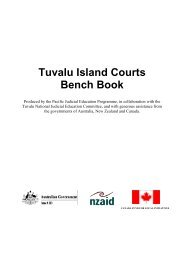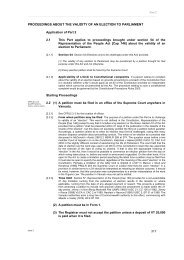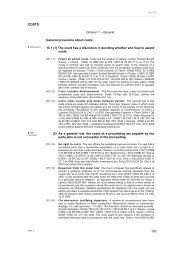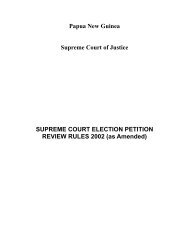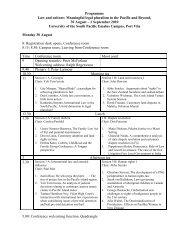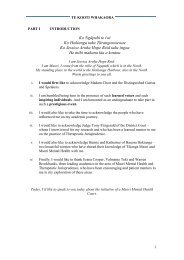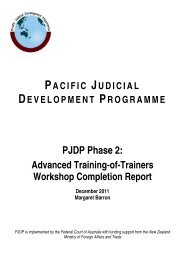Fiji Magistrates Bench Book - Federal Court of Australia
Fiji Magistrates Bench Book - Federal Court of Australia
Fiji Magistrates Bench Book - Federal Court of Australia
You also want an ePaper? Increase the reach of your titles
YUMPU automatically turns print PDFs into web optimized ePapers that Google loves.
3.1 The <strong>Fiji</strong> Constitution<br />
The first <strong>Fiji</strong> Constitution was created on 10 October, 1970. It was abrogated in 1987 by the<br />
Constitution Abrogation Decree 1987 and replaced by the 1990 Constitution. A review <strong>of</strong> that<br />
document created the current Constitution which was adopted on 27 July 1998.<br />
The Constitution is the supreme law <strong>of</strong> the State and any law inconsistent with it is invalid to the<br />
extent <strong>of</strong> the inconsistency: s2 Constitution.<br />
The Constitution details the basic elements <strong>of</strong> <strong>Fiji</strong>’s system <strong>of</strong> government by defining:<br />
• the roles, responsibilities and powers <strong>of</strong> the Executive, Parliament and Judiciary;<br />
• the organiation and structure <strong>of</strong> the legal system; and<br />
• the requirements <strong>of</strong> citizenship and details related to finance, land and leadership.<br />
The Constitution also states that governance will be based on the democratic principles <strong>of</strong><br />
equality, social justice, human dignity and communal solidarity.<br />
The Constitution is based on and outlines the Doctrine <strong>of</strong> the Separation <strong>of</strong> Powers which<br />
specifies that there should be three distinct and separate branches <strong>of</strong> government:<br />
1 The Parliament (legislature): makes laws;<br />
2 The Executive: administrator and policy maker;<br />
3 The Judiciary: interprets and applies the law.<br />
Each branch <strong>of</strong> government checks the roles and functions <strong>of</strong> the other branches. This process<br />
helps maintain the balance <strong>of</strong> power between the three branches and ensures the Executive not<br />
assume too much power.<br />
3.2 Statute Law<br />
Acts <strong>of</strong> Parliament<br />
Legislation passed by Parliament is the next most important law after the Constitution. These<br />
laws, in the form <strong>of</strong> statutes, can only be changed by Parliament and are binding on the <strong>Court</strong>s.<br />
However, the <strong>Court</strong>s may, in certain circumstances, recommend changes to the law or they may<br />
declare a specific statute law void if it is inconsistent with the Constitution: see State v Audie<br />
Pickering [2001] FJHC 69; HAM0007j.01s (30 July, 2001).<br />
Under the <strong>Magistrates</strong>’ <strong>Court</strong>s Act English common law, rules <strong>of</strong> equity and statutes <strong>of</strong> general<br />
application which were in force in England on 2 January, 1875 are in force within the<br />
jurisdiction <strong>of</strong> <strong>Magistrates</strong>’ <strong>Court</strong>s, but only so far as local jurisdiction and local circumstances<br />
permit and subject to any existing or future local Act: ss25, 26 MCA.<br />
See Josefa Nata v State FCA AAAH 0015/02.<br />
<strong>Fiji</strong> <strong>Magistrates</strong> <strong>Bench</strong> <strong>Book</strong> April 2004



